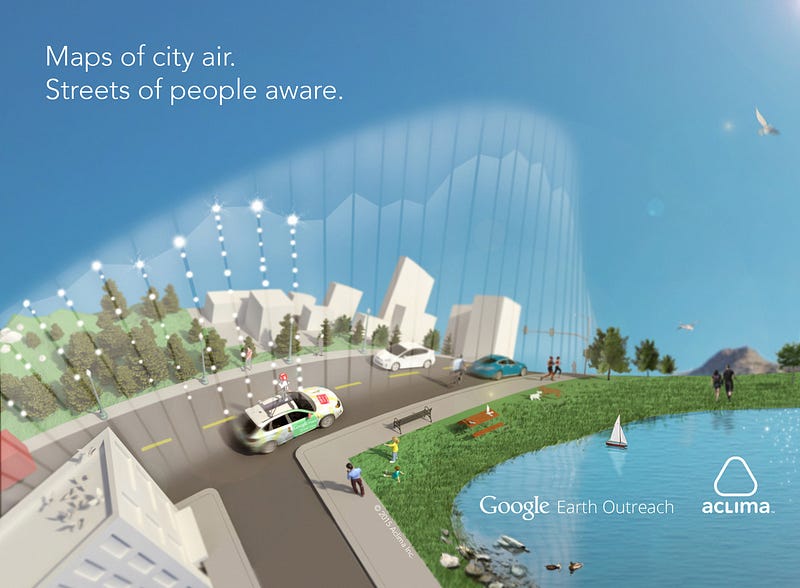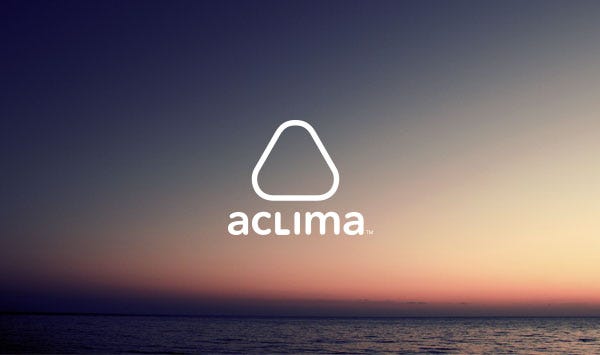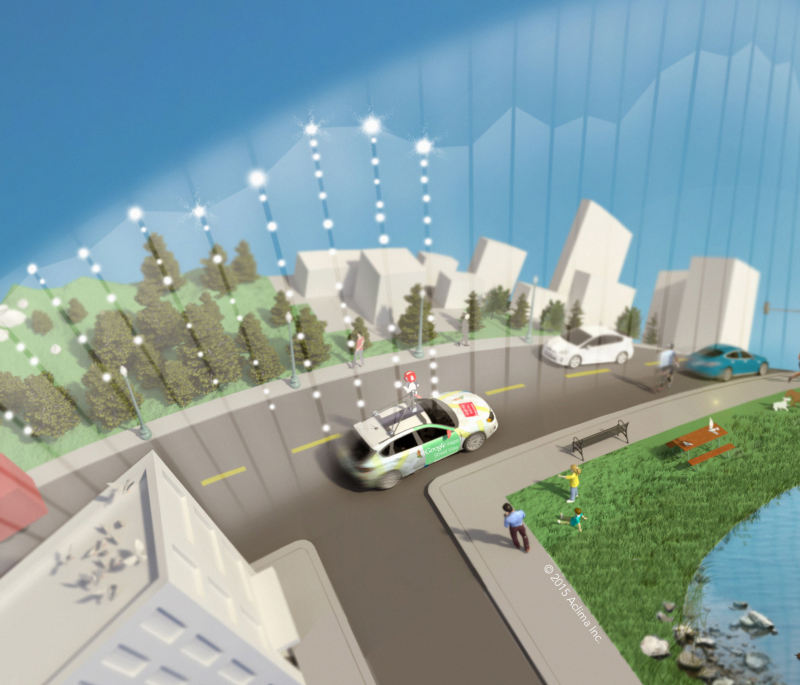Aclima and Google Partner to Map Outdoor Air Quality with Street View Vehicles
U.S. Environmental Protection Agency Advised Aclima on Platform Test in Denver
SAN FRANCISCO (July 28, 2015) — Aclima, Inc., a San Francisco-based company that designs and deploys environmental sensor networks, today announced a new partnership with Google Earth Outreach to map and better understand urban air quality. The partnership enables a paradigm-shift in environmental awareness by equipping Street View cars with Aclima’s mobile sensing platform to see the air around us in ways never before possible. Three Street View cars took measurements of nitrogen dioxide, nitric oxide, ozone, carbon monoxide, carbon dioxide, methane, black carbon, particulate matter, and Volatile Organic Compounds (VOCs) — air pollutants which can affect human health or climate change.
“We have a profound opportunity to understand how cities live and breathe in an entirely new way by integrating Aclima’s mobile sensing platform with Google Maps and Street View cars,” said Davida Herzl, co-founder and CEO of Aclima. “With more than half of the world’s population now living in cities, environmental health is becoming increasingly important to quality of life. Today we’re announcing the success of our integration test with Google, which lays the foundation for generating high resolution maps of air quality in cities.”
Aclima instrumented three Google Street View vehicles to perform a month-long system test in the Denver metro area during the DISCOVER-AQ study conducted by NASA and the U.S. Environmental Protection Agency (EPA). The cars clocked 750 hours of drive time and gathered 150 million data points, correlated with data from EPA stationary measurement sites. EPA provided scientific expertise in study design and instrument operations as part of a Cooperative Research and Development Agreement (CRADA) with Aclima.

“Environmental air quality is an issue that affects everyone, especially those living in big cities,” said Karin Tuxen-Bettman, Program Manager for Google Earth Outreach. “This partnership with Aclima builds on our ongoing partnership with the Environmental Defense Fund, enabling us to take the next steps in our pilot project to use Street View and Google Maps as an environmental mapping platform. We hope this information will enable more people to be aware of how our cities live and breathe, and join the dialog on how to make improvements to air quality.”
To assess if air quality is meeting — or exceeding — public health standards, the EPA relies on an extensive network of stationary equipment, placed in urban areas, that measure carbon monoxide, nitrogen dioxide, sulfur dioxide, particulate matter, hydrocarbons and photochemical oxidants. The monitoring network is designed for air quality regulation, but does not give a detailed picture of a community or urban area such that people can get a real sense of what air pollution is in their immediate surroundings. Aclima’s mobile sensing platform on Street View cars complements EPA’s regional air measurement network by introducing a new body of knowledge about air quality at the street level.
“Our research partnership with Aclima is helping us understand air pollutants at the local and community level, and how they move in an urban area at the ground level,” said Dan Costa, Sc.D., National Program Director, EPA’s Office of Research and Development. “New mobile air measurements can complement existing stationary measurements for a more detailed picture of personal and community air quality.”
“The Denver pilot was a scientifically driven process to validate the use of Aclima’s system for mobile environmental sensing with Google Street View vehicles and proved that mobile sensing at the street level is possible,” said Melissa Lunden, Director of Research for Aclima. “We want to get this right. Which is why we asked a team of nationally recognized air and climate scientists to review our methodology.”
“Many things affect air quality — everything from our transportation and energy choices, to green space and the weather,” said Herzl. “Understanding these complex relationships is critical to managing and improving air quality. The Denver test prepares us for scaling the system and introducing Aclima’s mobile sensing platform to communities anywhere Google Street View vehicles drive. There’s unlimited potential for our work to help improve the health and resilience of communities everywhere.”
This Fall, Aclima and Google will expand mapping efforts to the San Francisco Bay Area and work with communities and scientists to explore applications for this new environmental tool.
Today’s announcement builds on Aclima’s established partnership with Google to map the indoor environment. Together, they have created a network that is the first of its kind — connected across 21 Google offices around the world. The system processes 500,000,000 data points each day on indoor environmental quality, including comfort measures of temperature, humidity, noise, and light, and air pollutants like carbon dioxide and particulate matter. The information allows Google to evaluate environmental factors in their offices and, in the future, make better decisions on workplace design to support employee wellbeing, productivity and creativity.
Learn more about Aclima and Google’s partnership, and explore insights from our Denver test at insights.aclima.io.
Share this
You May Also Like
These Related Stories

New Research Reveals Hyperlocal Air Pollution Varies Over Space & Time

Aclima Comes Out of Stealth, Announces Partnerships with Google, EPA, and Lawrence Berkeley National Labs

/2022_Aclima_Logo_Mist_500px_wR.png?width=501&height=193&name=2022_Aclima_Logo_Mist_500px_wR.png)
